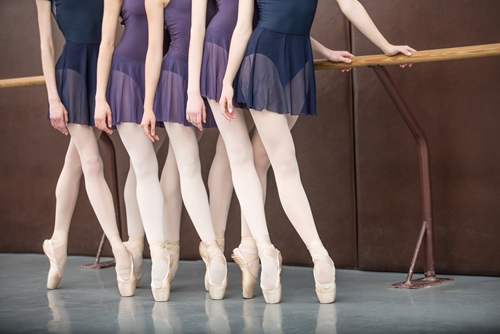If your studio offers a variety of classes for dancers with different skill levels, you’ll often be faced with challenges on when it’s time to consider advancing dance students to the next level. One of the most notable decisions is advancing ballerinas to pointe, but moving students to a more advanced class in any genre can be tricky. After owning your studio for a few years, you’ll find a method that works best for you, but here are some general tips on advancing dance students.
Do: Set Specific Criteria
Creating a set criteria for student advancement will make your life and the lives of your instructors a whole lot easier. Write up evaluation sheets that outline the skills and techniques needed for each class level. You can even use point systems to evaluate whether a dancer is ready to move up. In addition to technical aspects, you should also consider evaluating the dancer’s attitude, practice schedule and response to instruction, as these all play a crucial role in more advanced classes. Having a structured criteria will make the process fair and logical, and it’ll be a lot easier to explain to dancers and their parents what needs to be done in order to advance.
Don’t: Make Advancement a ‘Right’
There are bound to be dancers who feel that because they’ve completed so many seasons at a lower level, they’re entitled to advancement. This shouldn’t be the case. Advancing dance students who aren’t ready can be dangerous for the student and frustrating for the rest of the class. The dancers who are ready for the challenge will often be held back as unprepared students struggle. Dance Advantage explained that a student becomes a better dancer through dedication and practice, not by completing a certain number of classes. Advanced classes, including pointe, should be reserved for students who take the craft seriously and are 100 percent ready for the challenge, both mentally and physically.
Do: Take Time to Explain Your Decisions
When you make tough decisions to hold students back, realize how hard it will be on the dancer. The best thing you can do in this situation is sit down and have a conversation about how you came to the decision. Be prepared for tears and bargaining, but stay firm with your choice. Dance World Takeover explained that the best dancers will take criticism and use it to their advantage. Give your students as much advice as possible and be clear about exactly what it will take to get to the next level. After such talks, it will become clear which students are serious about pursuing their dreams and unafraid of hard work.
Don’t: Advance Students to Be With Friends
One of the most common complaints you’ll hear is that a student is being left behind while his or her friends advance. When this happens, you’ll want to acknowledge how the dancer is feeling – disappointed, let down and maybe a little embarrassed. However, explain that it wouldn’t be safe or fair to advance students so they could remain with friends. Make it clear to your dancers that it’s possible to catch up with peers if they put in the time to practice and stay focused during class. You can use this opportunity to light little fires under your students and help them to reach their full potential. Chances are that once they start class next season, they’ll quickly make new friends and focus on their love of dance.


